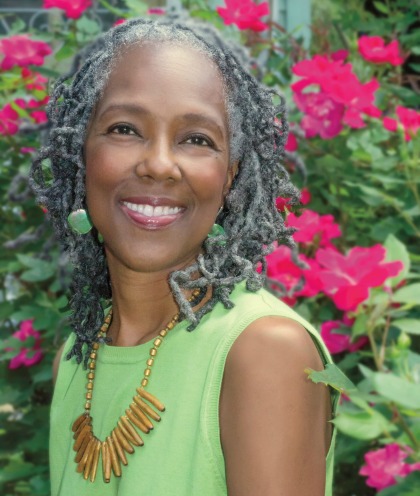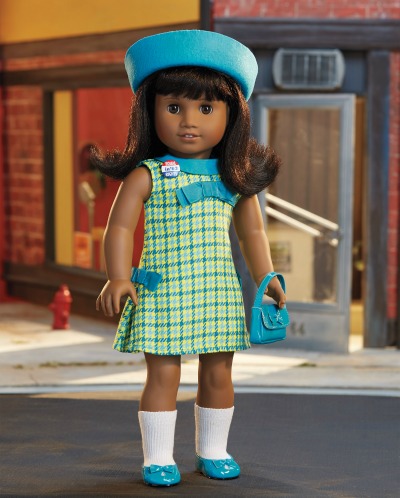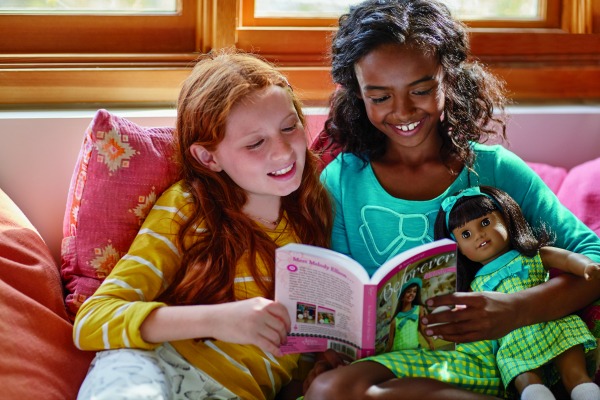
We’ve been speaking about the release of the latest American Girl doll, Melody Ellison for months now. But, as you know, every American Girl has a story. And Melody Ellison’s story was written by Denise Lewis Patrick. We had the opportunity to speak with this children’s author about the advisory board, including the late Julian Bond, who helped create her story, the importance of the doll’s hair, and the timeliness of Melody’s story in the midst of the Black Lives Matter movement.
You said that segregation was something you dealt with as a child. Can you share some of your experiences?
I grew up in Louisiana in a relatively small town. And the block where my family lived was kind of the dividing line between the Black community and the White community and their part of the town. Literally, we the house on the middle of the block. It was not necessarily every single day but certainly it was there, hovering. My Catholic school was an all Black Catholic school and we were very aware that there was a White one. And with Melody, the most direct instances of discrimination that she herself experiences are some that are loosely based on my childhood experiences in the community. Our town didn’t really have any major marches when I was a kid but it was the everyday stuff. The library—everything was separate. There was a Black public library and a White public library. I remember distinctly the day that our mother—because that was really, in many instances, the only way things changed. Because they closed the Black library and there was only one. And I remember the day my mother took my brother and me to register at the new library. Nothing happened but it was still so different, even physically different. We passed by that place several times a week and had never been in.
It was kind of nice to write Melody’s story in Detroit because they had a thriving, Black business community, and that was something I didn’t grow up with so that was nice and a nice way to show African Americans were supporting each other in all kinds of ways.
How did those experiences affect you as a child? Did it become the norm or how do you remember feeling about these instances?
I guess it was a bit of all of that stuff. I didn’t live everyday thinking ‘Oh I’m going to experience something awful. Oh, I’m going to be excluded.’ There was a guy who lived on the other end of the block, sat on his porch and used the N word, under his breath, sometimes not under his breath as we walked by. As my father walked by. We knew that that was something he shouldn’t have been doing. We did react to it. We did not fear him or feel that we didn’t have a right to be walking down our own street. So it was kind of a mixed reaction in some ways. One of the things personally, I felt as a child was one of the White neighbors had a niece that came by and we would play together in the yards, all the time. And by the time we got to high school, she worked at the movie theater, in the ticket booth. So I went down with some friends to go to the movie theater—that also, by the way, had been segregated. We sat upstairs for many years. But at this point, you could sit anywhere—So I went and said, ‘Hi.” And she looked right through me as if she had never seen me before. Now, I had been in her aunt’s house to get water because we were playing. So I was stunned for a hot second and then I was really angry. I remember that feeling. And then my feeling was ‘Ok, this is how that is.’ I have thought about it many times over the years and still not understood—as much as I would like to understand— what her thought process was.
 The Julian Bond was also on the advisory board. So you can speak about him and the role the advisory board played in bringing this character to life?
The Julian Bond was also on the advisory board. So you can speak about him and the role the advisory board played in bringing this character to life?
The advisory board was absolutely amazing and, I would say, invaluable to me. Especially because I got to meet them at the beginning of the project. The very first interaction I had was with Dr. JoAnn Watson, who grew up in Detroit, the day that I flew in. I’d never been to Detroit before. And we did a ride-around. She was talking, remembering and talking and telling. And through her eyes the community became real to me. That was my first day and then we had dinner and continued the conversation. It was about the feel and the reality. And that was what was so great about that particular group of people. Mr. Bond…just one of my childhood idols. So I had to chill out as I was directly across the table from him, thinking about seeing him on tv when I was a kid. He was wonderful, very nice, very funny. Very easy to talk to.
And to me, a lot of people have asked why it’s set in Detroit. And as parent, I know that the way that the way that kids are exposed to the movement, if at all in schools, we know that the movement was going on across the entire country. And different things were happening. And some of them took off from each other. So I think it’s really important that, as we try to give our history real shape in this country, it’s really important for us to understand what was going on everywhere. And for many of us, our knowledge is so narrow, that we need to broaden it. And so to me, setting the story in Detroit was an opportunity to broaden on knowledge on what was going on in our history in regards to the Civil Rights Movement and Black Equality. And what the issues were because the issues were broader r than just ‘I can’t go into this store.’ or ‘Somebody says something horrible to me or calls me out of my name.’ And I think a lot of our young people don’t really understand that it was that broad before. It always has been.

That leads me to my next question. Children today live in a different time. The education system is lacking and then Barack Obama is the only president they really know…so how do you explain segregation, inequality and injustices in a way that they can understand?
Just because of what you just said. We know that it is such a complex issue. This was another approach that I took, in the back of my head, from the beginning of the writing. You had to break down, what does justice mean to a six-year-old, seven-year-old, eight-year-old? What does fair mean? And that’s the word that they get. You can have a four-year-old saying, ‘It’s not fair.’ They understand that. So for me, the challenge was to frame what Melody was going through in the context of fairness.









